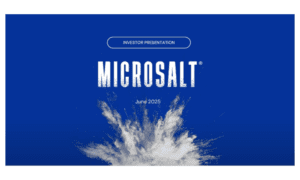There’s a growing global awareness of how excess sodium is snuck into our foods. Learn how both consumers and producers are outsmarting stealth salt.
Key Takeaways:
- Americans are consuming three times the recommended amount of sodium
- Most of the sodium consumed by Americans comes from processed foods – i.e., stealth salt
- Consumers are becoming increasingly aware of the negative relationship that exists between excess sodium and health
- Spices and salt substitutes such as calcium chloride and potassium chloride can be used to reduce sodium intake
- MicroSalt® offers full flavor but with 50% less sodium
For years salt has been stealthily slipped into practically everything to improve taste and prolong the shelf life of processed foods. Gradually the average American has adopted a high-sodium diet that has three times as much salt as their body needs daily.
Did you know that the simple salad dressing, your “healthy” canned vegetables, or that ham and cheese sandwich could be the culprit behind your health issues?
The national sodium intake has escalated so much that the American Medical Association recently requested that the FDA exclude sodium from the list of safe food additives.
Why is it called stealth salt?
As high as 80% of the salt consumed every day does not come from the saltshaker on your table. It comes from prepackaged and processed foods that sneak in the extra salt. Moving from fresh, homemade meals to processed, easy-to-prepare meals has made us sodium junkies.
The occasional slice of pizza or the sodium-laced microwave dinner might not send you immediately to the ER. But chronic consumption of excess sodium will get you there.
According to a recent recommendation by the Dietary Guidelines for Americans, the healthy amount of sodium for adults per day is 2,300 mg, which is roughly 1 teaspoon of salt. That number is reduced to 1,500 mg for those 50 or older, have high blood pressure, or are of African-American descent.
The extra sodium we consume has negative effects on our blood pressure, heart health, and even our bones (in the form of calcium leaching). Read the short-term versus long-term effects of sodium here.
Even if you consume excess sodium but haven’t noticed a decline in your health, it doesn’t mean you’re safe. Sensitivity to salt increases with age. A reason for this could be the natural decline in liver function that happens as our bodies age. As more Americans have become increasingly aware of the negative effects of high sodium intake, the “stealth salt” industry has been put on a countdown.
Cutting back on stealth salt
Americans are now consciously taking steps to cut back on their daily sodium consumption. This involves scrutinizing food labels and using this information to choose low-sodium products. Here are other steps that consumers are taking to cut back on their sodium intake:
Choosing fresh first
Sodium is added during the processing of most meats and other foods. Picking fresh foods significantly reduces sodium intake.
Selecting by the numbers
The same food can have huge sodium ranges by brand. For example, spaghetti sauce could vary from 300 mg to 750 mg per 1/2 cup. Choose the brand with the lowest sodium of an average of 300 mg per serving.
Reading the fine print
Labels such as low sodium and very low sodium are steadily becoming staples. These can be a good option for reducing sodium intake.
Eating at home
Because restaurant food is mostly high in sodium, cooking at home where you can regulate your salt is a fresh, healthy choice.
Draining and thoroughly rinsing canned foods
Canned veggies are literally soaking in saltwater. Rinsing these off ensures that you cut the overall sodium significantly.
Going easy on condiments
Sauces, salad dressings, dips, soy sauce, mustard, relish, and ketchup are all high in sodium. Reducing your consumption of these or doing away with them completely is a sure win.
Can salt substitutes save the day?
Many manufacturers of processed foods and snacks are now cutting back on sodium. Science has confirmed that gradually reducing salt over a couple of years is the most effective way of reducing sodium levels. Salt substitute blends are emerging to be a useful tool for reducing sodium intake. The era when processors and restaurants could sneak in added sodium is ending as consumers become more health-conscious. This has prompted food and snack manufacturers to reduce the sodium content in their products without making them taste bland.
Manufacturers and restaurants are taking various approaches to reduce sodium in their servings. Tangy and citrus spices can flavor foods and snacks in place of regular salt.
A study done by Washington State University found that substituting parts of sodium chloride with either potassium chloride or calcium chloride can help cut back on stealth salt. According to WSU food science professor Carolyn Ross, “It’s a stealth approach, not like buying the ‘reduced salt’ option, which people generally don’t like.”
The researchers found that they had to use a ratio of 96.4% sodium chloride, 1.6% potassium chloride, and 2% calcium chloride to achieve the ideal salty taste. This is less than a 5% reduction in sodium. While it’s a step in the right direction, it still leaves much to be desired.
What about 50% less sodium but with double the flavor?
You read that right. MicroSalt® offers micro-sized salt particles that offer double the flavor of regular salt but with 50% less sodium. This is the secret ingredient in SaltMe®! full-flavor, reduced-sodium potato chips. MicroSalt® helps food producers limit stealth salt by offering full flavor at 50% of the sodium content.
Our team strives to create a new food industry norm where good health doesn’t come second to great taste. MicroSalt® is the proud global winner of the P&G Alumni Network’s 2021 Star Entrepreneur Award. We’d love to help make your product the best it can be. Simply contact us via our message page, connect with one of our international offices, or call 1 (877) 825-0655 to learn more.




